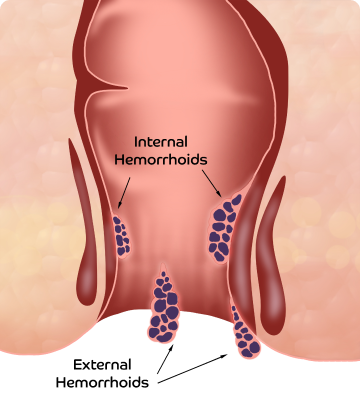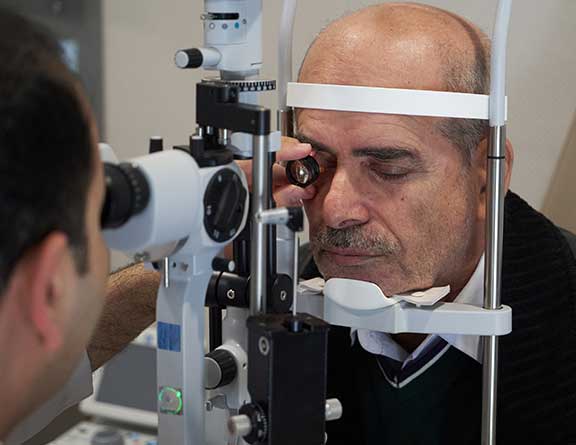Different Types of Cataract Surgery in Surat
Most cataracts are age-related, i.e., they occur due to the changes in the eye that occur as you get older. The most common types of cataracts are-
1: Nuclear Cataract
As the name signifies, this type of cataract starts to form in the nucleus of the lens, i.e., the middle part. The lens turns densely yellow to brown and clouds the vision to an extent that it becomes difficult to distinguish between different shades of color.
2: Cortical Cataract
The cortical cataract affects the edges of the lens first and then progresses to the nucleus. It begins as whitish streaks in the lens that interfere with the light passing through.
3: Posterior Subcapsular Cataract
This type of cataract affects the back of the lens and starts as a small, opaque area. It falls directly in the path of light and reduces the nearby vision along with other symptoms, such as glares or halos. This type of cataract progresses very quickly.
Besides age-related degradation of eye health, cataracts can arise due to other reasons. Based on these reasons, cataracts are further categorized into the following types-
- Congenital cataracts arise in children due to some trauma, genetic factors, or intrauterine infection.
- Traumatic cataract forms due to some injury, such as burn, chemical, or splinter in the eye. They may take years to show visible signs or may appear right away.
- Radiation cataract is caused due to excessive UV exposure or as a side-effect of radiation therapy for cancer.
- Secondary cataract is the type that occurs due to another condition or as a result of medical treatment.
At Pristyn Care, we provide treatment for all types of cataracts and help people preserve the gift of sight.
How is a cataract diagnosed?
Cataract diagnosis involves a series of tests that are done to accurately measure the severity of cataracts and other eye conditions. In most cases, cataracts can be detected with a dilation test performed during a routine eye exam. Other tests that may be conducted prior to the surgery include-
- Visual Acuity Test– It is performed with the help of an eye chart that has a series of letters. Each eye is tested to determine if your vision is getting impaired or not.
- Slit-lamp Examination- This test allows the eye specialist to see eye components under magnification. The slit lamp illuminates the cornea, iris, and lens. Thus, the doctor can detect the protein deposits on the lens clearly.
- Retinal Exam- The doctor puts eye drops for pupil dilation and examines the lens to look for signs of cataracts with the help of an ophthalmoscope.
Besides the above-mentioned tests, some additional testing may also be required, including-
- Biometry or IOLs workup to check the power of the lens required
- B-scan or ultrasound to identify the maturation stage of cataract
- Pentacam test to determine the correct position for lens placement
- Specular microscopy to detect corneal diseases that may affect the outcome of cataract surgery
How to prepare for Cataract Surgery?
The cataract doctor will guide you at every step during the treatment. The doctor will explain what the surgery entails during the initial consultation and prepare you mentally. Other preparations that are generally done before cataract surgery involve the following-
- Getting the eyes tested thoroughly to identify other eye disorders.
- Determining which type of intraocular lens is appropriate for your eyes.
- Using eye drops and other medications prescribed by the doctor.
- Avoid smoking and drinking completely at least a week before cataract surgery.
On the day of surgery, the doctor may also ask you to avoid eating and drinking anything 6-8 hours prior to the surgery.
How to prevent cataracts?
There are no studies that help to prevent cataracts. However, doctors usually suggest some things that make it possible to detect cataracts at an early stage and improve overall eye health. These things include-
- Having a regular eye examination to detect cataracts and other problems at early stages.
- Quit smoking entirely as it affects the eyes, especially the optic nerve.
- Manage the conditions that can lead to cataracts, such as diabetes.
- Take a healthy diet with plenty of fresh fruits and green leafy vegetables to improve overall eye health.
- Wear sunglasses to protect the eyes from harmful UVA and UVB rays.
Cataract Treatment Without Surgery- Possible or Not?
There are many misconceptions about cataract treatment. The most common is that cataracts can be treated or managed with eye drops. However, the eye drops available at pharmacies and medical centers are not effective in managing cataract symptoms or reversing the condition. The only cure for cataracts is surgery.
Generally, doctors suggest that maintaining a healthy lifestyle and taking good care of the eyes can slow the progression of cataracts. However, there is no evidence that proves this theory. The right approach for cataract treatment is looking out for problematic symptoms and undergoing cataract surgery at the right time. Typically, eye specialists recommend cataract surgery before the condition reaches the hypermature stage.










.svg)









